The Best iPhone-Compatible Hearing Aids, Audiologist Reviewed
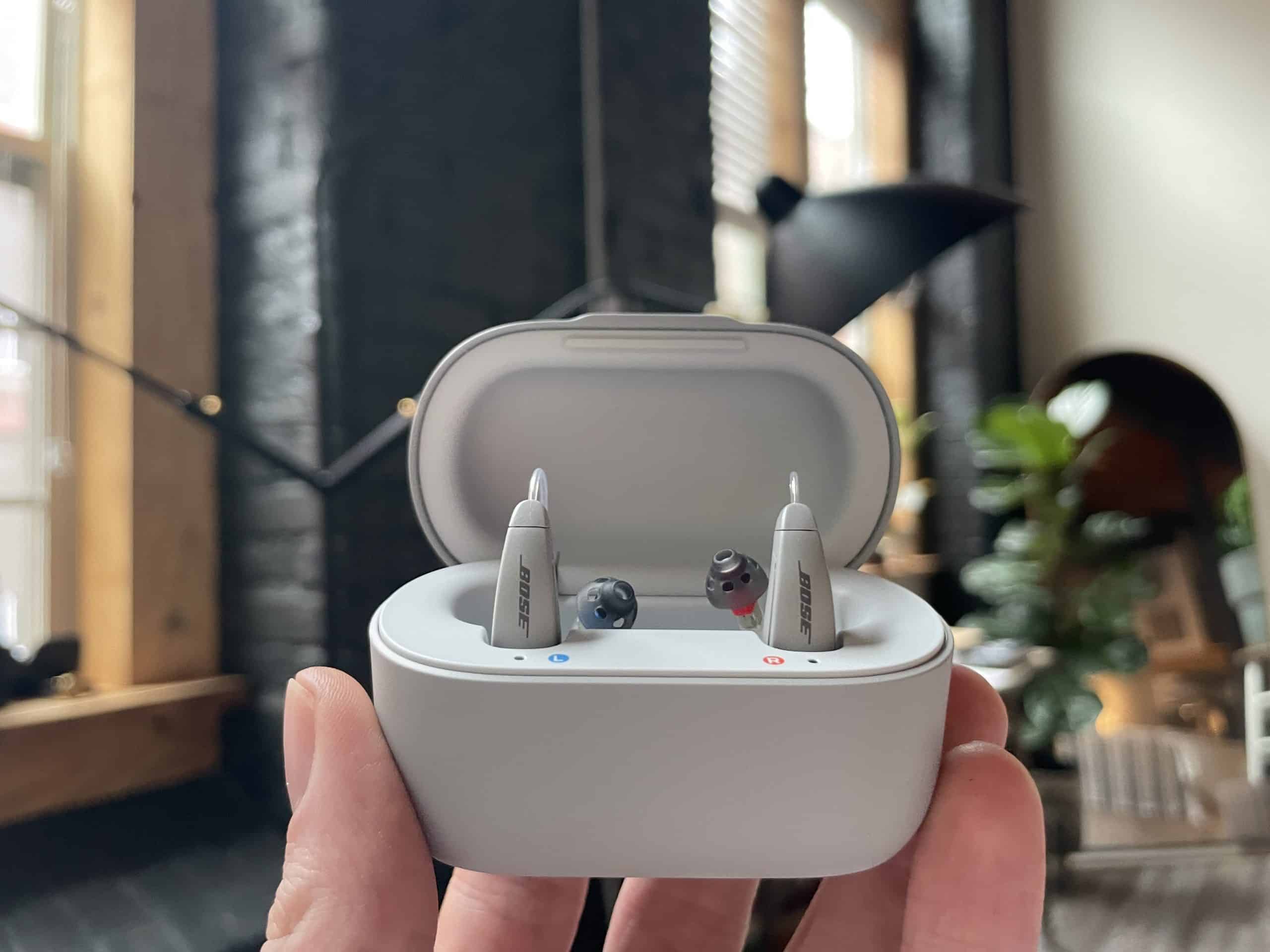
Key Findings
- Jabra Enhance hearing aids are one of the few brands that allows a user to stream music and calls directly to one’s hearing aids.
- Eargo hearing aids are nearly invisible when worn, and they are compatible with a powerful iPhone app.
- Built with Bose technology, Lexie hearing aids delivered exceptional sound quality, and they can also stream calls from an iPhone.
FYI: Looking for hearing aids for as low as $300 per pair? Then read our rundown of the best hearing aid brands overall.
Why Trust Us?
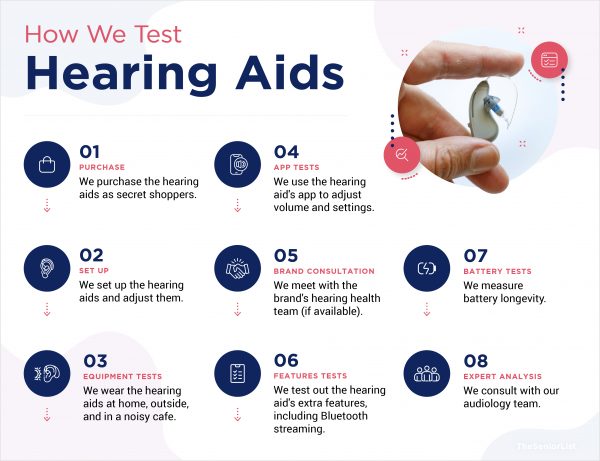
To create this list, we tested 20 different hearing aids from a dozen brands. We evaluated each device on the following criteria:
- Bluetooth capabilities: We chose hearing aids with Bluetooth capabilities for volume control and sound adjustments. Some of them even allow you to stream music and calls from an iPhone phone.
- Hearing aid apps: We focused on finding the best hearing aids with free accompanying smartphone apps. These apps offer remote adjustments from a licensed hearing professional, the ability to customize the settings and volume of your hearing aids, hearing tests, and more.
- Affordability: Hearing aids can get expensive, with features such as smartphone compatibility, discreet design, and rechargeability. We focused on less expensive hearing aids that cost under $3,000 per pair.
- Sound quality: We looked for iPhone-compatible hearing aids offering superior sound quality and volume control for specialized listening environments. We wanted hearing aids that offer crystal-clear sound quality for a variety of situations, whether you’re at a restaurant or watching TV.
Our Favorite iPhone-Compatible Hearing Aids
- Enhance Select 50R : Best for Audio Streaming
- Eargo 6 : Best Invisible Hearing Aid
- Lexie B2 Plus : Best Sound Quality
The Best iPhone-Compatible Hearing Aids Compared
|
Enhance Select 50R
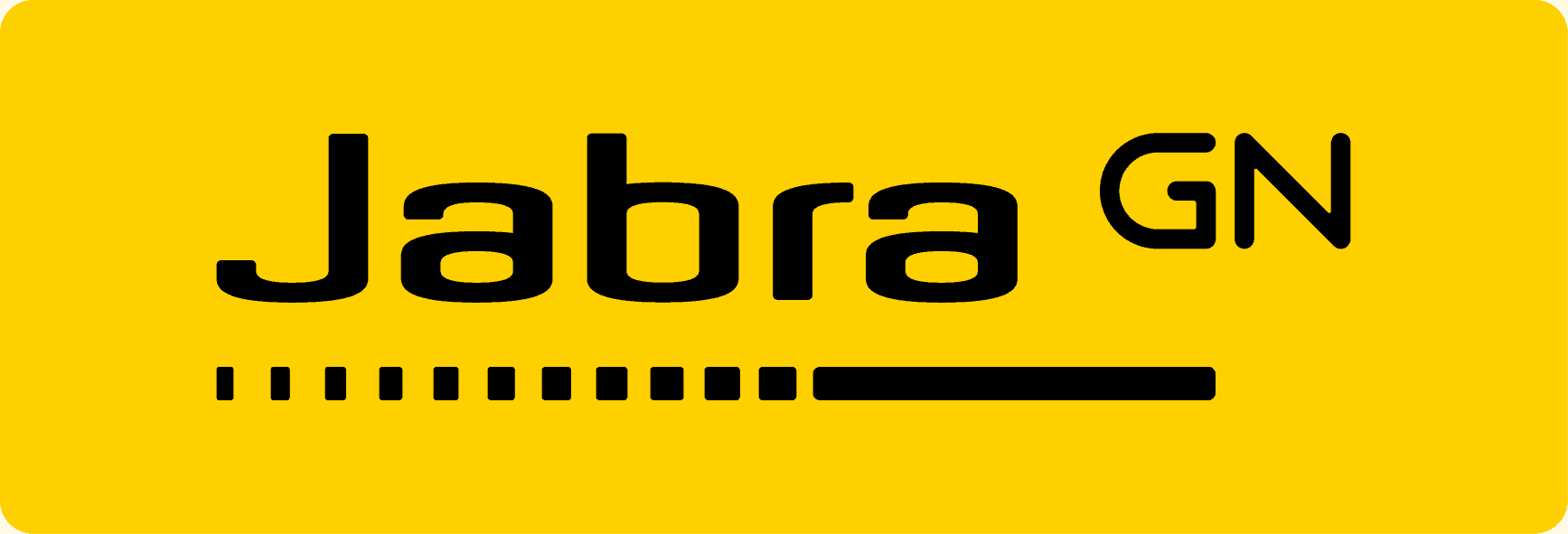 |
Eargo 6
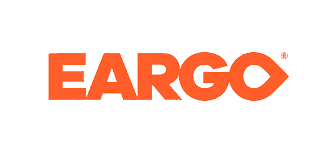 |
Lexie B2 Plus
 |
|
|---|---|---|---|
| Rating out of 5 | 4.8 | 4.2 | 4.4 |
| Cost for a pair | $995 to $1,195 |
$2,250 |
$999 |
| Warranty | 1 to 3 years |
1 year |
1 year |
| Phone features |
|
|
|
Our Top Picks
Enhance Select 50R - Best for Audio Streaming
 View Packages
Links to Jabra Enhance
View Packages
Links to Jabra Enhance
What We Like Most:
- Long-lasting rechargeable batteries
- Direct streaming from smartphones
- Remote adjustments
- Excellent customer support

Overview
Cost: $995 to $1,195 for a pair
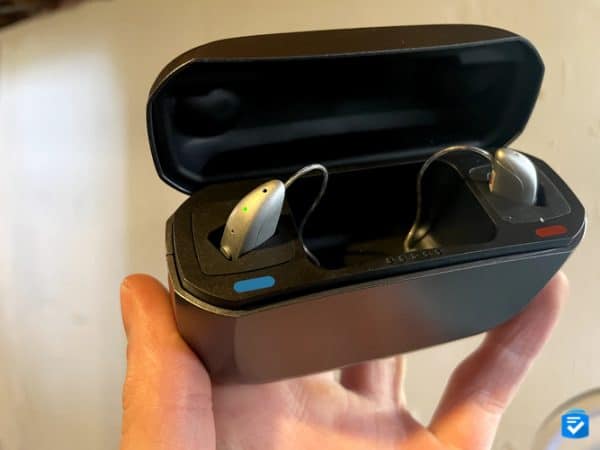
If you want high-quality hearing aids that can stream audio directly from an iPhone, then Jabra Enhance Select 50R hearing aids will be your best bet. Compared to the other hearing aids on this list, the Jabra Enhance Select 50R hearing aids have the widest variety of iPhone capabilities. Through the Jabra Enhance Select App, I could adjust our hearing aid volume, change sound environments, and reduce background noise. I could even make virtual appointments with the Jabra Enhance team of hearing health professionals.
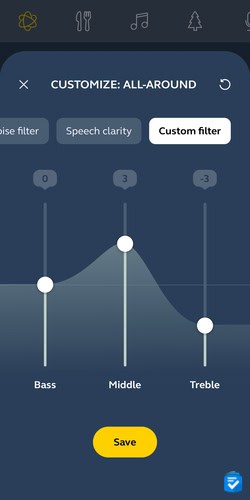
>>Read more: The Best iPhones for Seniors
Unlike the other devices on this list, all Jabra Enhance models allow you to stream music and phone calls from your iPhone. This meant that when I wanted to listen to music, I didn’t have to remove our hearing aids. All of these features made the Jabra Enhance Select 50R incredibly easy to use and fine-tune to a variety of hearing loss types. Adjustments were as easy as pulling out an iPhone phone and tapping a few buttons.
The only downside here would be that, although Jabra Enhance hearing aids cost as low as $995, I had to pay an extra $200 to have access to their team of hearing specialists. Brands like Eargo include similar support at no extra cost. Still, Jabra’s devices are more affordable, even with the extra payment.
To learn more about our experience with these hearing aids, read our full Jabra Enhance review.
Pros
- 30-hour battery life
- High-quality sound
- Ongoing support from hearing professionals
- Easy-to-adjust settings
- Bluetooth compatible
- 100-day return window
Cons
- Professional support costs extra
- Music streaming is low-quality
Eargo 6 - Best Invisible Hearing Aid
What We Like Most:
- Incredibly discreet design
- Remote adjustments via smartphone
- Free hearing specialist support
- One-year warranty
Overview
Cost: $2,250 for a pair
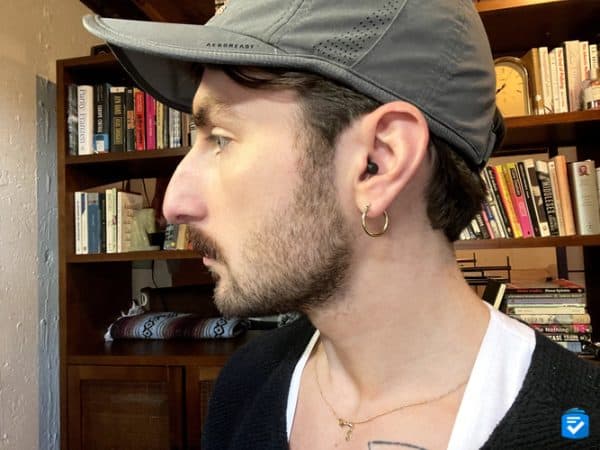
Eargo 6 hearing aids fit completely inside the user’s ear, making them practically invisible when worn. If you’re worried about the appearance of hearing aids, then an Eargo device will offer a discreet solution. Not only is the Eargo 6 the smallest device on this list, but it also includes a sleek, compact charging case that can store up to two full recharges. And while the battery life on the Eargo 6 (roughly 16 hours) was slightly shorter than that of Jabra’s hearing aids, it was enough to get us through the day.
>> Read more: Eargo 6 Review
While the other hearing aids on this list allow you to adjust sound settings through smartphone apps — as do these — with the Eargo 6 you don’t even have to open your app to make these adjustments. For example, when I walked from a busy street to a quiet library, my hearing aids automatically adjusted to pick up more noise in my surroundings. The only drawback here is that Eargo hearing aids don’t support the streaming of music or calls. Luckily, they’re small enough that you can use a pair of over-ear headphones for calls or music.
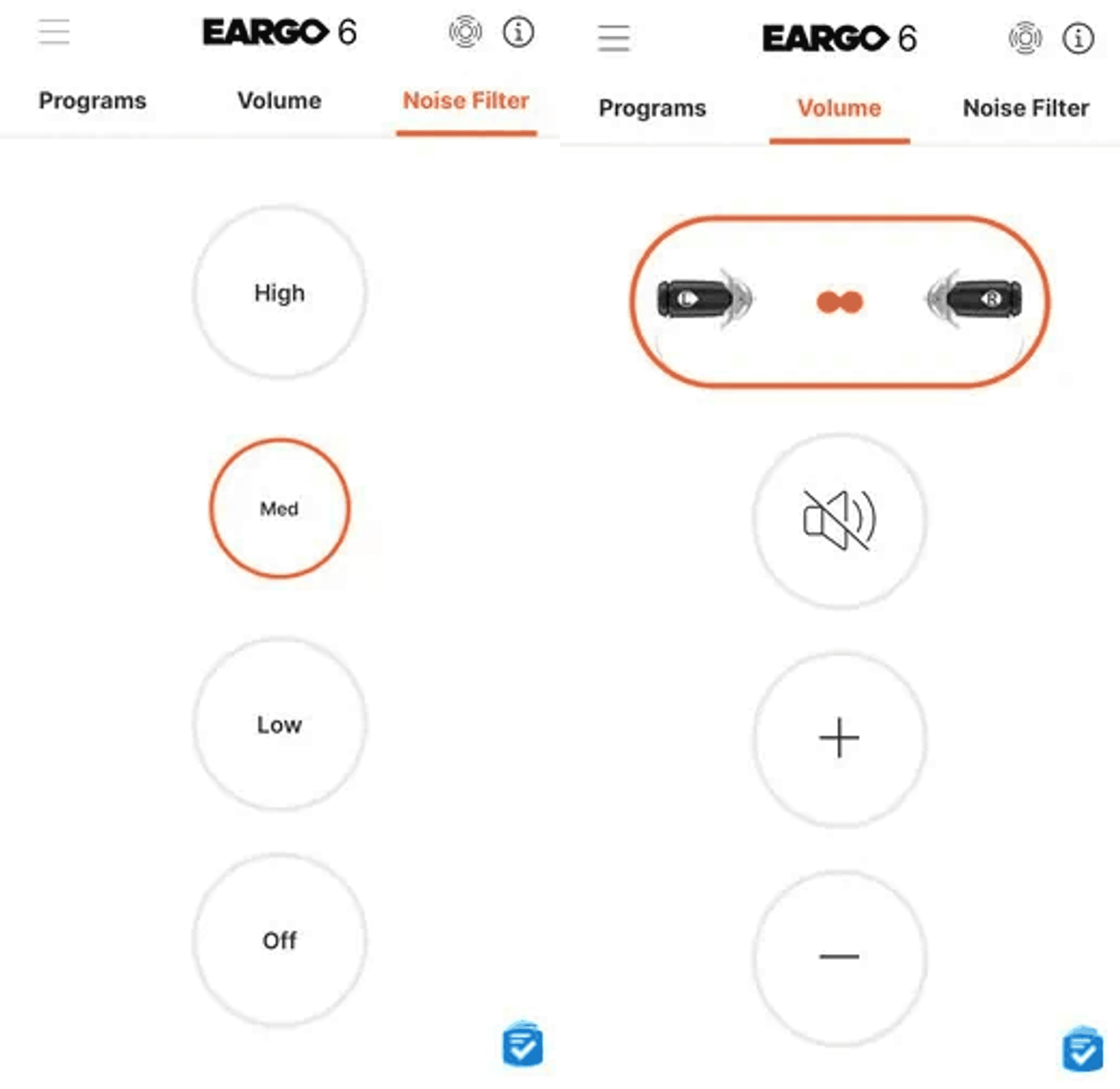
Eargo hearing aids cost a bit more than the other devices on this list, starting at $2,250 for the Eargo 6. However, included with your purchase is lifetime remote support from Eargo’s team of hearing professionals. In our experience, these experts were able to remotely assess our issues and adjust our hearing aid settings from afar. To learn more about the company and its devices, read our full Eargo hearing aids review.
Pros
- Automatic sound adjustments
- Lightweight and comfortable
- Stellar sound quality
- Lifetime hearing specialist support
Cons
- Warranty limited to one year
- No phone call or music streaming
Lexie B2 Plus - Best Sound Quality
What We Like Most:
- Easy adjustments via Bluetooth
- In-app hearing test
- Under $1,000 for a pair
- Financing available
Overview
Cost: $999 for a pair

Lexie has long been one of our favorite makers of affordable hearing aids, and their B2 Plus model did not disappoint. Featuring Bose hardware, these hearing aids demonstrated impressive sound quality. They were also easy to adjust through the Lexie iPhone app.
While wearing the Lexie B2 Plus hearing aids, I found crisp sound quality in a variety of environments. In particular, I noticed that these hearing aids performed well in noisy settings. In restaurants, cafes, and noisy city streets, I found that they allowed us to focus on our conversations without totally losing the sounds of our surroundings. They also worked well when it came to streaming phone calls from an iPhone. The one downside here would be a lack of music streaming, which seemed like an oversight for a Bose-branded hearing aid.
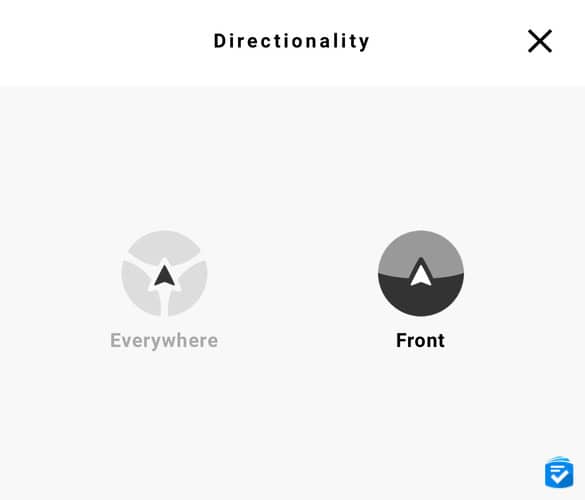
Still, with a highly useful app and professional support from hearing specialists, I think Lexie hearing aids are a veritable bargain. To learn more about our experience with these hearing aids, read our full Lexie hearing aids review.
Pros
- Exceptional sound quality
- Phone call streaming for iPhones
- In-app hearing test and adjustments
- Unlimited customer support
Cons
- No music streaming
- No water-resistance
Honorable Mentions
These days, most brands offer some type of iPhone-compatibility on their hearing aids. While the following brands didn’t make our final list, I think they’re still worth a look for certain users.
- Widex: Many Widex hearing aid models, including the Moment, support iPhone connectivity. What held us back from ranking them? Their high prices, averaging $4,000 for a pair, prevented us from including them.
- Audicus: Several Audicus models support iPhone adjustments; however, I found the Audicus app to be a bit clunky and difficult to use.
- Signia: Signia’s Styletto AX hearing aids impressed us with their sound quality and iPhone compatibility, in spite of their high price of roughly $3,000. If you have severe hearing loss, this model might be a good fit.
What Are iPhone-Compatible Hearing Aids?
There are several hearing aids on the market that can easily connect to your smartphone for a seamless hearing experience. If you have an iPhone, then you can stream music, phone calls, and other audio directly through your hearing aids.
Some other iPhone-specific features to look for:
- Remote telecare from audiologists and self-tuning hearing adjustments
- Customized hearing and environmental settings
- Fall detection
- Driving directions and emergency contact alerts
- Volume control for one or two ears
- Bass and treble control
Bottom Line
There are several hearing aid companies that have adapted to modern technology to make sure their hearing aids are compatible with iPhones and other Apple devices. For a hands-free and wireless experience, consider enabling Bluetooth on your smartphone. It would allow you to enjoy the benefits of clear phone calls, streaming TV and music, and other unique features. I recommend first checking with your hearing aid provider to see which iPhone models are compatible with its hearing aids and whether additional accessories are required for direct audio streaming.
Additionally, check out our other helpful guides.
Frequently Asked Questions
-
What hearing aids work best with iPhone phones?
Some of the best hearing aid companies with iPhone compatibility include Eargo, Lexie, and Jabra Enhance.
-
How can iPhone phones work with hearing aids?
Select iPhone models are compatible with your Bluetooth-enabled hearing aids. Once successfully paired, you’ll be able to stream TV, music, and other audio directly to some models of hearing aids.
-
Can iPhone phones connect to hearing aids?
Not all iPhones can connect to hearing aids that are iPhone-compatible. Check with a hearing aid provider to see if your iPhone model can connect to their hearing aids.
-
Can a cell phone be used as a hearing aid?
On some models, like the Jabra Enhance Select 50R, a cell phone can be used as a microphone, allowing you to more clearly hear a specific speaker.


